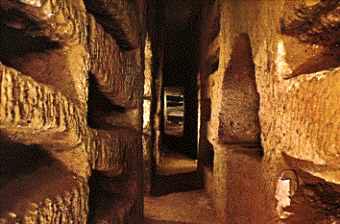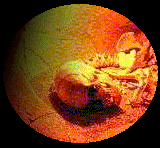TRACES OF THE CATACOMBES
Joel Weishaus

"Traces of the Catacombes" takes its name from the "hollow (hallowed) ground" of Early Christianity, excavated in what was then the suburbs of Rome. But there are other catacombs, such as those beneath Paris, and layers of "creative impulses" and "differed meaning" to be uncovered. So that the title plays on the name of French artist Mireille W. Descombes, who plays with the non-presence of bodies of text.
M.W. Descombes. Quoted In C. Gandelman, "Torn Pages of Deconstruction: The Palimpsests of Mireille W. Descombes. In, L. Edson, et al., editors, Conjunctions-Verbal-Vistual Relations. San diego, CA., 1996.
We begin with a circle that is also a link:
C.M. Bache, Dark Night, Early Dawn: Steps to a Deep Ecology of Mind. Albany, NY., 2000.
© Joel Weishaus. Revised 2011
